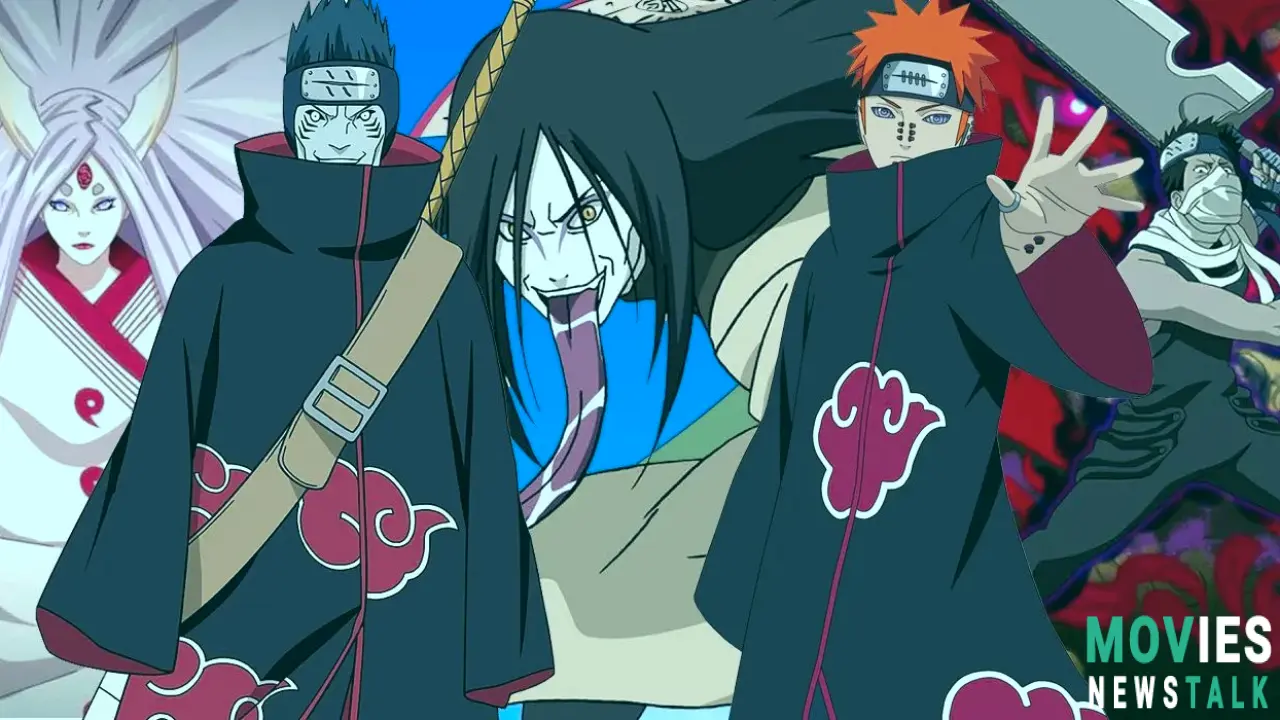Naruto's Hidden Contradiction: How Sasori Exposes Kishimoto's Storytelling Dilemma
Naruto's Deepest Paradox: Idealism vs. Reality
Naruto is awesome. It’s a sprawling story filled with incredible characters, intense battles and some seriously touching moments that demonstrate just how compelling and interesting these character’s inner emotional landscapes could really be. But beneath that amazing surface? There’s a big storytelling problem that even the creator, Masashi Kishimoto, kind of acknowledges. This problem centers around a massive disconnect: the ideals ofKonoha(Naruto's home village), that seemingly utopian village full of great people—versus the tragic realities reflected in many character’s very tragic backstories; demonstrating that those grand ideals may ultimately lack their ability to completely prevent the many problems arising from it.
Konohais supposed to be a shining example—a village built on peace and unity thanks to the first Hokage,Hashirama Senju. But many characters; their development comes through a difficult and almost violent environment. These characters have serious issues stemming from extreme difficulties they face. And this very tension–ideals versus reality–underpinsNaruto'snarrative in key moments. This becomes very evident, particularly inSasori’sbackstory.
Kishimoto's Empathetic Villains: A Storytelling Goal that Backfires
Kishimotois a brilliant storyteller who often demonstrates that kind of sensitive and nuanced emotional depth— particularly surrounding various moments dealing with intensely emotional topics such as violence and loss! He aims for empathy in even his villains—he tries, and succeeds many times, making their origins make sense.As he said during an interview withKana:
"In the first chapters of Naruto, I already talk about power struggles, politics, and the main projects of the main Trio. But what interests me isn't the end goal, but how they came to have that goal in the first place. How did they come to act like they do? I really dig this psychological process. I think the reader is like me: he wants to understand. So I talk about the place the characters grow up, the reasoning behind their acts. I try to make the reader feel empathy for a character who seems evil at first sight."
Yet,Kishimotoadmits another critical point, something inherently difficult; the idealistic approach towards handling tragedy.He claimsNaruto’s optimism–this unwavering hope is necessary; this is inherent within that shonen aesthetic; yet this ideal clashes strongly against the grim realities expressed within those emotional struggles that create those difficult narratives that the characters face, leaving viewers struggling with the sheer inconsistency shown within how these things relate!
That creates the tension inNaruto’sstorytelling.KishimotowantsKonohato be this hopeful symbol. But writing those realistic villains–those characters built upon serious and deeply realistic backstories–shows just how flawed this idealized world really is! That flaw really stands out even stronger within many key characters; showcasing exactly how those conflicts work!
Sasori: A Product of Konoha's Failures
Sasoriperfectly exemplifies that contradiction. AnAmegakureorphan—his parents were killed during a war betweenKonohaand the Hidden Sand Village, resulting in another huge tragic event that changesSasori’sentire direction in life. This isn't necessarilyKonoha’sfault. War's terrible! But the failure to create lasting peace underscores how flawedKonoha’sideal of peace truly is!
Sasori'sstory generates plenty of empathy: An orphan, taken in by his grandmother and taughtpuppetry. He excels at his skill, even making puppets of his parents, demonstrating that inherent difficulty and pain involved. He realizes however how unable those replacements really were; causing his interest and obsession around achieving true immortality.
This is particularly insightful concerning his partnership withDeidara, showcasing this obsession. His work becomes an artform, a strange expression of loss and a quest for permanence, demonstrating the intense psychological effects created by this huge loss.
His skill leads him to notoriety. He becomes “Sasori of the Red Sands” (for the blood of his enemies). Yet, he is not completely evil. This is shown very clearly!
Instead, Sasori embodies a significant storytelling conflict: Kishimoto’sidealistic portrayal ofKonohacontradicts his realistic villain designs,resulting in those amazing characters who challenge those very ideals, likeSasori.UnlikeSasukeor theAmegakureorphans (whose stories show the direct consequences ofKonoha’sactions)Sasori'sarc displays those general flaws within the system itself; an inability of theshinobiworld to really achieve that kind of peace, that idealized future he desired!
Conclusion: Naruto's Unresolved Tension Makes It Incredibly Compelling
Naruto'sstory is filled with huge contrasts: utopian idealism versus harsh realities; these very contradictions, and that core tension between hope and despair creates that extremely compelling storyline; makingNarutosuch a beloved classic!
Sasori'sbackstory brilliantly displays that flaw– those consequences often hidden beneathKonoha'sideals. It forces you to question those assumed realities. It forces reflection, making those intensely difficult situations; those unresolvable tensions become something compelling to view; a uniquely brilliant part of the storytelling!

